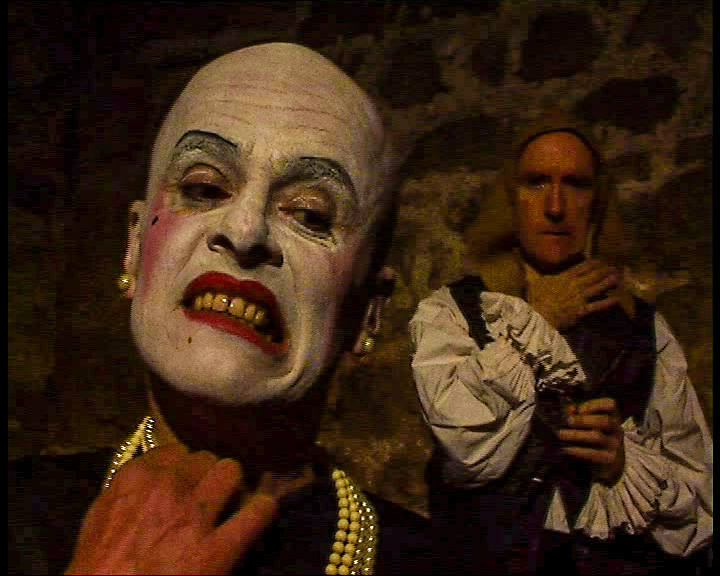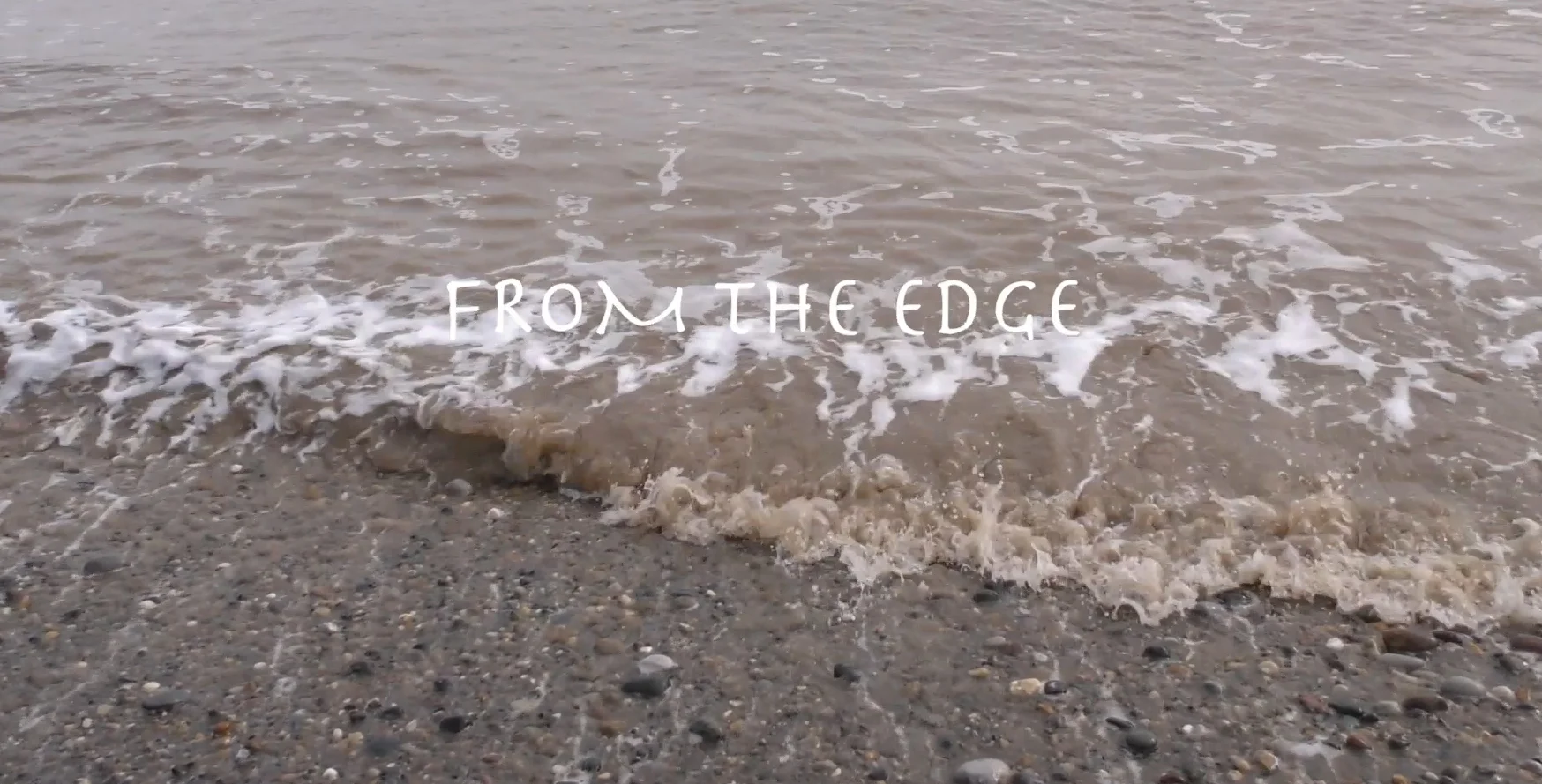Films
While I was working as a teacher in schools I made films with students. I remember setting up the school video camera on a sort of framework in the photographic darkroom so that we could make animations. Earlier, we made a fairly clonky sci fi film which was enlivened by the army, who happened to be in the school on some kind of recruiting drive. I was able to persuade the squaddies to advance with fixed bayonets upon a fairly crumby alien which we had made earlier
I.N.S.E.A.D…..I forget how the acronym works. Something like Institute for Education in Art and Design, a professional body for art teachers, whose remit included the awarding of grants for classroom research. They gave me money on two occasions to make films. The first was a fairly straightforward record of ways I had used pieces of sculpture borrowed from the county’s museum service to introduce kids to gallery sculpture.
The second film recorded a series of lessons in which I had encouraged the students to work cooperatively rather than individually. This didn’t go down so well with the INSEAD people who seemed to think I was some kind of communist mole.
In January 1997 the school where I worked underwent an Ofsted inspection. At the time, theOfsted system was notorious for its destructive authoritarianism. My friend David Pearce, an actor, agreed to play the part of an extra inspector during the week of the inspection. I think there were twelve real inspectors, plus David who operated independently. He wore a bowler hat and carried a briefcase after the fashion of Rene Magritte’s bureaucrats. I had made him a sort of cage cum office in the school entrance, festooned with quotes from Vaclav Havel’s essay The Power of the Powerless. David measured heads and performed other inspectorial tasks before setting fire to his desk. On the Thursday of the inspection week he escorted my friend Hugh Willietts, a science teacher, onto the school field, tied him to a goalpost, blindfolded him and shot him with a replica pistol.
We filmed all of this nonsense with the school video camera and later I edited it into a ten minute movie. I disposed of hundreds of DVD copies of The Ofsted Film and later the film was posted on the net. As I understand, there have been some thousands of hits.
Later that year we made a short fiction film Please Be Quiet , again featuring David, in his bowler hat, and Linda my wife, and unpredictable filing cabinets. I met Louis Purver through that project. He was teaching film and television at a college in York when I met him, and he was a great source of expertise as well as being a thoughtful and easygoing camera man.
When I made an application for film funding some time later, I was able to use Please Be Quiet as a show reel. We got the money and were thus able to shoot Orpheus a film we shot mostly on location in Morecambe and Blackpool. They let us shoot stuff in the Midland Hotel in Morecambe, an Art Deco set piece, built in the nineteen twenties, but at that time very run down.
The very accommodating Tourist officer in Morecambe allowed us to burn a car on the promenade, I recall. Later, we held a spoof black tie premiere for the film in The Midland Hotel.
We made a second film, Quietus, based on texts by the Elizabethan playwright, John Webster, not long before Linda and I left the UK in 2002. We shot the film on locations in the Yorkshire Dales, though many of the places we had planned to use were closed to us because of an outbreak of foot and mouth disease in the North of England.
This film developed a kind of academic pedigree. Rowland Wymer, at that time Professor of English and Media at Anglia Ruskin University, included the film in a post graduate course of study called Responses to the Renaissance, alongside Derek Jarman’s Edward the second. He subsequently wrote a very positive academic essay about the film.
See: Reinventing the Renaissance. Shakespeare and his contemporaries in adaptation and performance. Palgrave Macmillan.
Rowland Wymer also gave us some money toward the first film we made in Greece.
After a break of almost ten years, we began making films again, in Greece in 2012, working with Greek friends and meeting new people along the way. We were lucky to have been befriended by Ismini Konstantopoulou, a doyenneof the Kalamata theatre scene and a fine performer.
I also met her son Stathis Giftakis and his wife Lilly Triantari. Stathis is principal of the Odeio, Kalamata’s music school and a well known composer. From the outset, he has been a great source of support with the films we have made in Greece as well as writing and arranging soundtrack music and performing.
We shot the first film in English. It was called : Eleni Petraia . The story follows a woman (Lilly) and her children caught up in a Maniot vendetta. It was shot on location in Mani. The film was shown atKalamata’s Cinecenter and later at the London Greek Film Festival.
A year or so later, in 2012, we started to shoot Danae, a Greek language film. Everyone wanted to do a comedy and this was the closest I could get. The film is set in Mani during the Turkish occupation and follows a hapless band of brigands, a group of female sea traders and the mythological heroine, Danae.
My daughter Clare found Orpheus obscure when she first watched it from a hospital bed in Australia. It probably is.
In the myth, Orpheus’ wife dies and he follows her into Tartarus to beg the king of the underworld to allow him to take her back into the world of the living. The king tells him to walk back the way he came and he says that his wife will follow, but if he turns back to see her before they have returned to the light, then she must return to the underworld. Orpheus cannot help himself. He turns to see her.
We shot the film in Morecambe and Blackpool. The interior shots were mostly done in the Midland Hotel in Morecambe. The Midland is an Art Deco set piece but at that time the building was very dilapidated. It has since been restored.
Loom. We shot this short film (26 minutes) in the summer of 2015.
Until a generation ago, a loom for weaving cloth was common in many houses in Greece, particularly in rural areas. Often the cloth was woven for domestic use…sheets, blankets, material for clothing. In Mani, silk weaving was done in the home on a commercial basis.
The loom is an object of use but it can be thought of as a symbol of the traditional domestic life of women. Weaving can stand as a metaphor for existence itself. There is also something powerfully suggestive in the sound of a loom at work.
There is no dialogue in the film and the narrative is not closed. In a small way, it is a meditation on the traditional lives of women.
Within a lifetime, weaving looms have all but disappeared from private houses. We found it hard to locate one in working order, and were grateful to the nuns at the Kalamata nunnery for their help.
Oresteia: a short film (35mins) which takes as its theme the central story of Aeschylus' Oresteia plays. Agamemnon returns victorious from the Trojan war to Mycenae and is murdered by his wife Clytemnaistra. Seven years later their son Orestes kills his mother in retribution.
Language: Greek/English with Greek/English subtitles.
David Pearce's slightly tongue in cheek glimpse into the lives of Peter Huby and Linda Cox. June 2019.
From the Edge: A short film film by David Pearce about Peter Huby and his return to Spurn Point - a place very familiar from his childhood and a continuing inspiration for his paintings and sketches.

